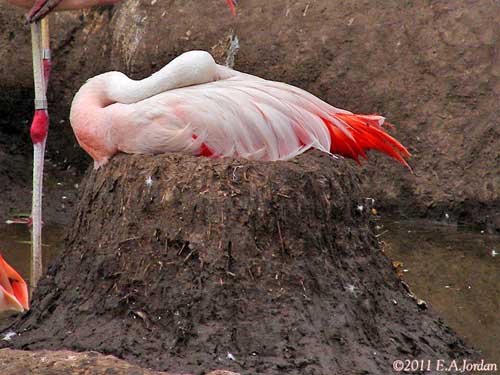
TO BE CONTINUED... Page 6
Text by Nicole Bouglouan
Photographers :
John Anderson
John Anderson Photo Galleries
Patrick Ingremeau
TAMANDUA
Eduardo Andrés Jordan
MIS AVES – AVES DE ARGENTINA
René Lortie
René Lortie photographe & Galeries d'oiseaux sur Pbase
Otto Plantema
Trips around the world
Philippe et Aline Wolfer
OISEAUX D'ARGENTINE
Nicole Bouglouan
Photographic ramble & My pictures on IBC
These images and the text are subject to copyright and cannot be used without express authorization from the owners. Legal issues
Sources :
L’ENCYCLOPEDIE MONDIALE DES OISEAUX - Dr Christopher M. Perrins - BORDAS - ISBN: 2040185607
Wikipedia, the free encyclopaedia
Bird nests: Variety is Key for the world’s avian Architects
Be on the lookout for bird nests
The design and function of birds' nests
The bird and its nest, where everything starts…
Page 5: Phoenicopteriformes - Anhimidae, Anseranatidae and Anatidae
At the beginning of the breeding season and following several courtship displays, the nest-site is selected by the pair, or one of the members of the pair, and the nest is built within this area. For numerous species, the nest is the place where displays and copulation occur. It plays a very important role during the nesting period. It is the cradle of the chicks, the place where the adults feed them prior to their first flight towards independence.
The family Phoenicopteridae includes six species of flamingos. They are graceful birds, very agile in their movements in spite of their tall silhouette and large size.
The breeding season involves spectacular collective displays during which flamingos move together like a pink cloud walking and waving over the water. Numerous birds, usually several hundreds or thousands according to the species, display together. They perform series of ritualized postures and movements.
The flamingos breed in colony that can be huge, sometimes with several hundreds or thousands pairs.

The nest is a truncated cone with a shallow depression at top. This nest is made by both adults with soft mud. If stones and plant debris are available, the birds add them to the mud. The nest-building is usually initiated by the male, and then the female follows it but more actively. Once the egg has been laid, the building continues, often rapidly, to heighten the nest. Such nests can be reused after repair and heightening.
On rocky islands where soft mud is not available, the birds build only a circular rim of debris or small stones. This type of nest is found in sites where there is no danger of flooding.
The family Anhimidae includes three South American species. Screamers are large walking birds fairly similar to geese. This morphology is well adapted for walking through and on the floating marsh vegetation. They are good fliers thanks to the long, broad wings, but take-off requires heavy wingbeats.
The three species frequent open savanna, marshes, meadowlands and lakes with dense vegetation. They remain in this type of habitat all year round, although during the breeding season, they nest close to the water. This location allows the chicks to escape from terrestrial predators.
Screamers are monogamous with long-term pair-bonds. They may nest at any time of the year with a peak between October and December, and are solitary nesters. They maintain a breeding territory which is defended against intruders of all species.
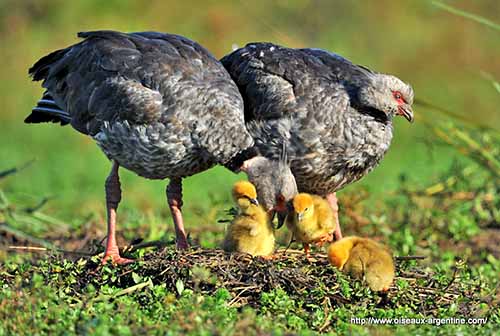
Both adults build the nest, a pile of weeds, reeds and sticks placed on the dry ground but near water, or in shallow water. In that case, it is usually partially anchored to brush or grass in water.
The nest can be quite large. The nest materials are collected in the vicinity of the nest, but also further afield. Located among vegetation and made with vegetal materials, this nest is almost invisible.
The Magpie Goose of family Anseranatidae is usually more terrestrial than other Anseriformes. This bird is a mix of duck and goose by its appearance.
It frequents the marshy areas with dense vegetation, both in fresh and brackish waters. It is often seen in grasslands in floodplains along the tropical rivers. These areas are usually subject to great variation of water levels. This species is never far from the coasts.
The Magpie Goose is regularly polygamous with peculiar mating system. One male is paired with one or two females which lay in the same nest. The three adults share the incubation. The three adults share the nesting duties. This species breeds in relatively large colonies. The nest is built by both sexes, a large pile of spike-rush and floating vegetation. The stems are trampled with the feet in the water before to be used. The adults feed the chicks bill to bill first, and later, they bend the grasses with their feet and the chicks can reach and eat the seeds.
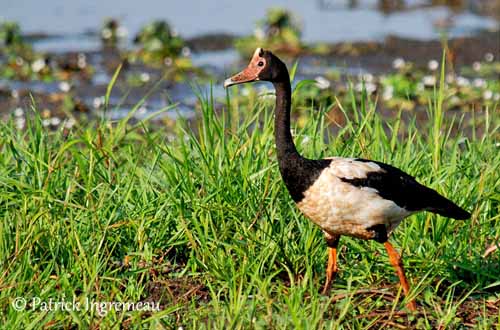
Most of the Order Anseriformes includes ducks, geese and swans. Some species may slightly differ in behaviour and appearance, but they share several other features with the main species.
The nest is usually a simple structure, and often consists of a hollow or shallow scrape in the ground, with a lining made with soft vegetation such as grass, mosses and lichens. But this lining is often made with down feathers coming from the female’s breast, creating an extensive brood patch.
This habit is mainly developed in species that breed at high elevations, and especially the Eiders.


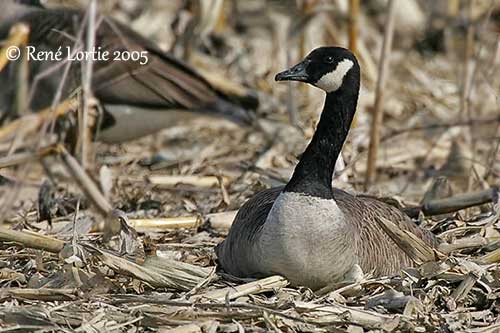
But some species such as whistling-ducks, most perching ducks, goldeneyes, goosanders and mergansers nest in holes in trees, and often use vacant holes excavated by large woodpeckers. They can also nest in hollows among boulders or under vegetation, depending on nest site availability in the habitat.
The geese such as the Brant Goose and the Red-breasted Goose that breed in barren tundra tend to nest on tops of hills, rocky outcrops or even cliff faces, in order to avoid predation by terrestrial mammals or birds.
The nest of the Barnacle Goose is often a shallow depression lined with grass, moss, lichens and down. But numerous birds nest on cliff ledges in order to avoid nest-predators. In this case, the nest is made with dead leaves and mud, and lined with down prior to the laying. They also nest on the ground on coastal islands.
The swans nest on the ground. In the Mute Swan, the nest is built by both parents. The male brings nest materials to the female. It is a large mound of vegetation among the reeds or floating on water.
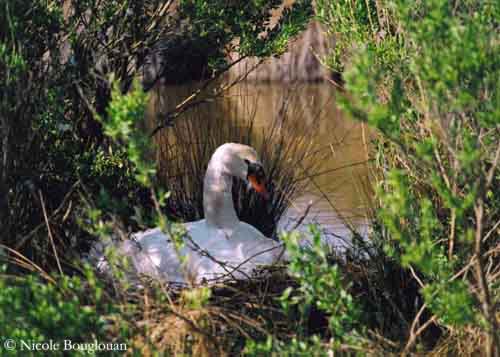
The Black Swan nests in the riverine vegetation close to the water, or on islets. When nesting in colonies, the nests are very close to each other.
The large structure is a mound of floating vegetation, but it may also be placed on the ground. It can reach a diameter of two metres, and 40 cm high. It is made with twigs, stems, sticks and grass, often fixed together with mud.

In most species, the nest is built buy the female with some exceptions including the swans, the whistling-ducks and the Magpie Goose. In these species, the male helps with the building. However, in the Coscoroba Swan and the Cape Barren Goose, the nest is only made by the male.
Other species may use abandoned nest structures of other bird species. The Egyptian Goose uses empty heron nests, but also the huge nest of the Hamerkop.
The scoters nest on the ground, well concealed among dense vegetation. The nest is often near shallow small lakes. The depression is lined with grass and some feathers.
Unique amongst the Order Anseriformes, the Black-headed Duck is a parasitic breeder. The female lays her eggs in other nests of various marsh species including coots and Rosy-billed Pochard.


Rosy-billed Pochard
The male on the right, protects the female at nest. Only her head is visible among the vegetation.
Several females often lay in the same nest, but usually, one female lays between 4 and 12 eggs. The incubation varies according to the species, but it lasts about 3 weeks to 45 days. The chicks are precocial and feed themselves very soon after hatching. They are fully feathered at 5 to 10 weeks of age, and reach their sexual maturity at one year.